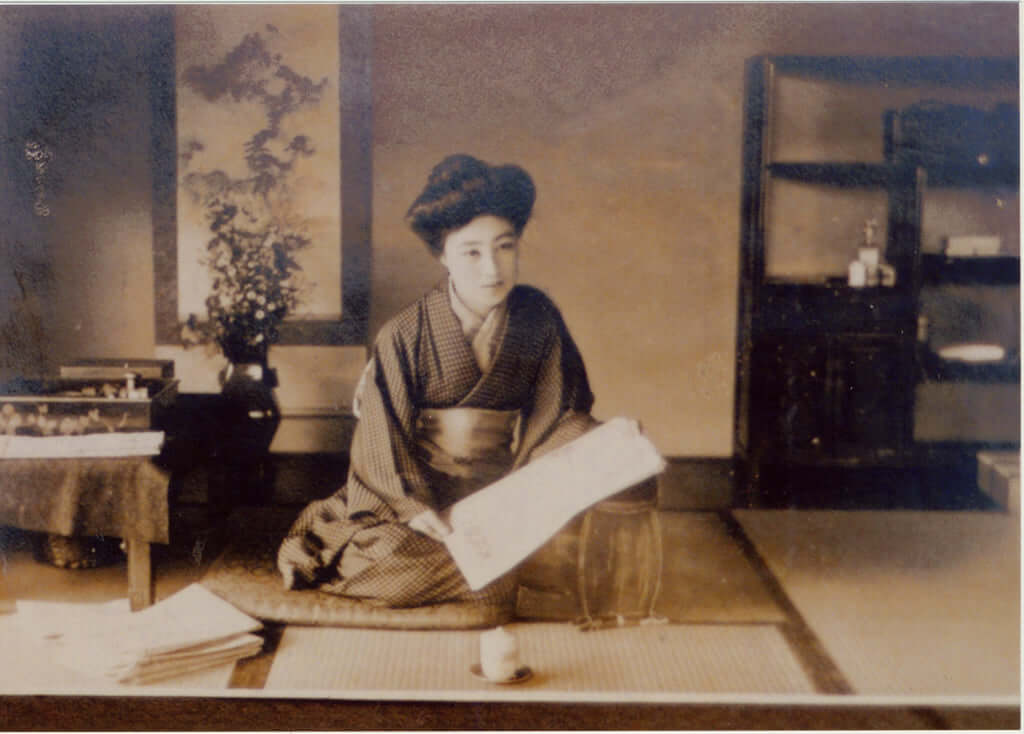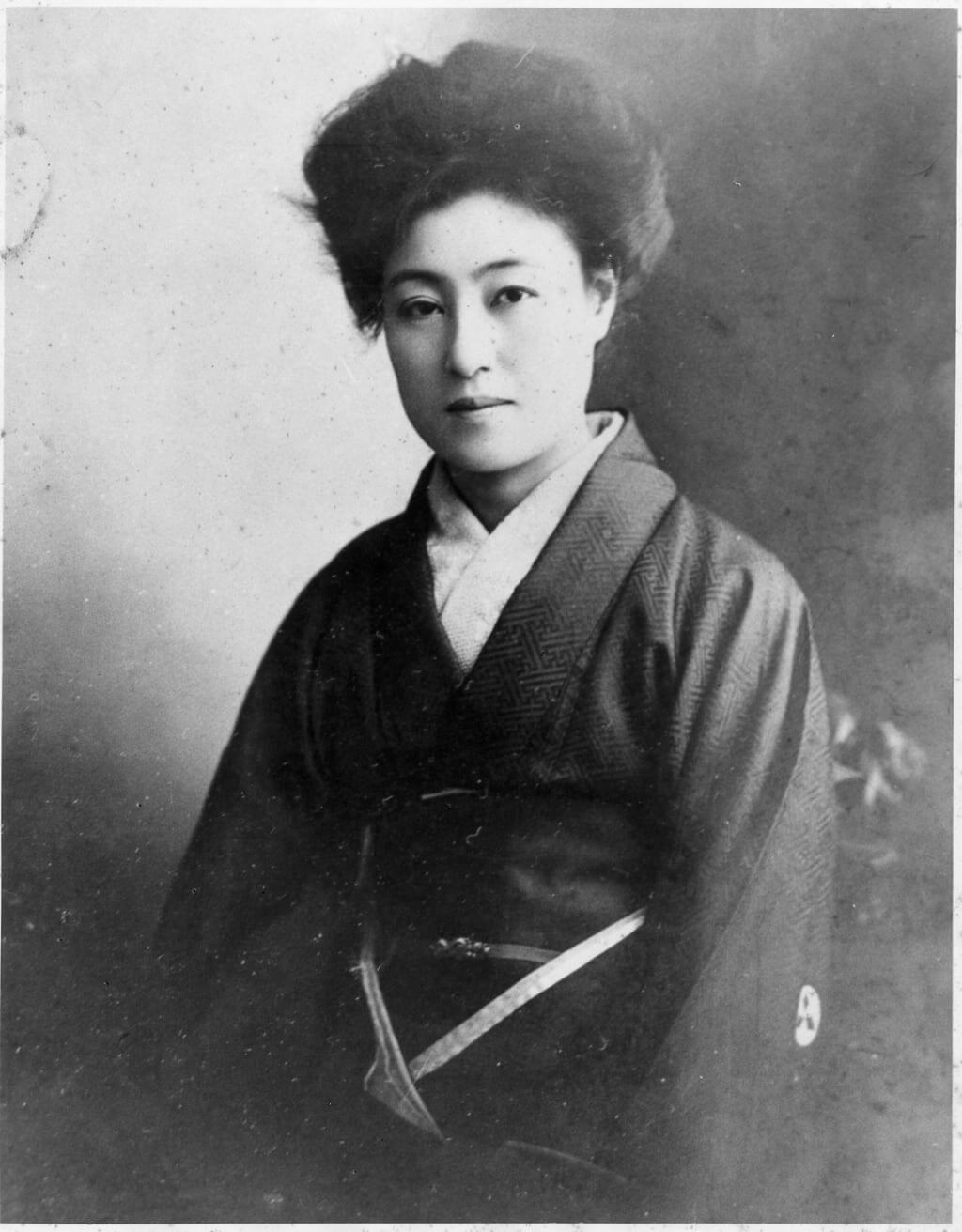The Story of Sada Yacco, the Geisha who Bewitched Europe
Described by Dazed magazine as the first beauty influencer, she has been restored to her former glory since 2019.

Courtesy of Cultural Path Futaba Museum
For many years, the artistic heritage left behind by Sada Yacco in Europe was played down, if not overlooked entirely. In recent years, however, several publications have given her back her former glory. Born into a wealthy family in 1871 and a descendant of a family of samurai, Sada Yacco (also written Sadayakko) owed her dazzling career to a stroke of bad luck. When she was seven years old, her father, worn down by debt, left her in the care of geishas. While with them, she learnt all the traditional arts: the tea ceremony, flower arranging, singing and, above all, dancing and theatre. After becoming the Prime Minister’s mistress at just 15 thanks to her beauty and the magnificence of her shows, she met her husband, actor Kawakami Otojiro, with whom she would open a theatre in Tokyo. They then set out to try to conquer the United States.
Once in America, Sada Yacco became an actress. At first, her troupe floundered, but soon experienced increasing success. She won the respect of dance superstar Isadora Duncan, and was catapulted to fame by another celebrity, American Loïe Fuller, who opened the doors of her theatre in Paris to her and even acted as interpreter in her interviews with foreign magazines. In 1900, Sada Yacco crossed the Atlantic to go to Paris and perform The Geisha and the Knight as part of the Exposition Universelle. She was an immediate success. It was the first time a Japanese theatre troupe had appeared in France, and it went down so well that the young woman hosted a garden party at the Elysee.
A muse for French artists
Her success continued. One of the few remaining photos of Sada Yacco was taken by Pablo Picasso. Debussy took inspiration from her when composing music. During the ‘Japanism’ movement, Sada Yacco acted as idol and muse for French artists. She also experienced commercial success: Guerlain, surfing on the wave of her fame, created the perfume ‘Yacco’ in homage to her. During this period, the young woman launched her own range of cosmetics and kimonos, sold in a boutique in her name not far from the Opéra Garnier in Paris.
Her artistry with makeup, drawing on the geisha tradition, imposed another form of beauty, far from the quest for a natural look that persists in Europe: instead, she favoured red lipstick, a thick base and black accents around the eyes. Parisian women adored her and were inspired by her way of living. She returned the compliment and, in an interview for Femina magazine, declared: ‘Everything suits them, everything makes them look deliciously pretty, they extract the best from all that surrounds them… Everything, in Paris, has exquisite taste. Every Parisian is an artist, even if not by profession.’
When she returned to Japan in 1901, Sada Yacco was no longer just a star, but an internationally famous figure upheld by her contemporaries as a symbol of the modern, free woman. Seven years later, she opened the first theatre school for women. Her story is retold by Lesley Downer in the book Madame Sadayakko: the Geisha who Bewitched the West.
Madame Sadayakko: the Geisha who Bewitched the West (2003) by Lesley Downer, published by Gotham Books.

Courtesy of Cultural Path Futaba Museum

TRENDING
-
A House from the Taisho Era Reveals Its Secrets
While visiting an abandoned building, Hamish Campbell discovered photographs the owner had taken of the place in the 1920s.

-
The Taboo-Breaking Erotica of Toshio Saeki
The master of the 1970s Japanese avant-garde reimagined his most iconic artworks for a limited box set with silkscreen artist Fumie Taniyama.

-
With Meisa Fujishiro, Tokyo's Nudes Stand Tall
In the series 'Sketches of Tokyo', the photographer revisits the genre by bringing it face to face with the capital's architecture.

-
Masahisa Fukase's Family Portraits
In his series ‘Family’, the photographer compiles surprising photos in which he questions death, the inescapable.

-
Hajime Sorayama's Futuristic Eroticism
The illustrator is the pioneer for a form of hyperrealism that combines sensuality and technology and depicts sexualised robots.





